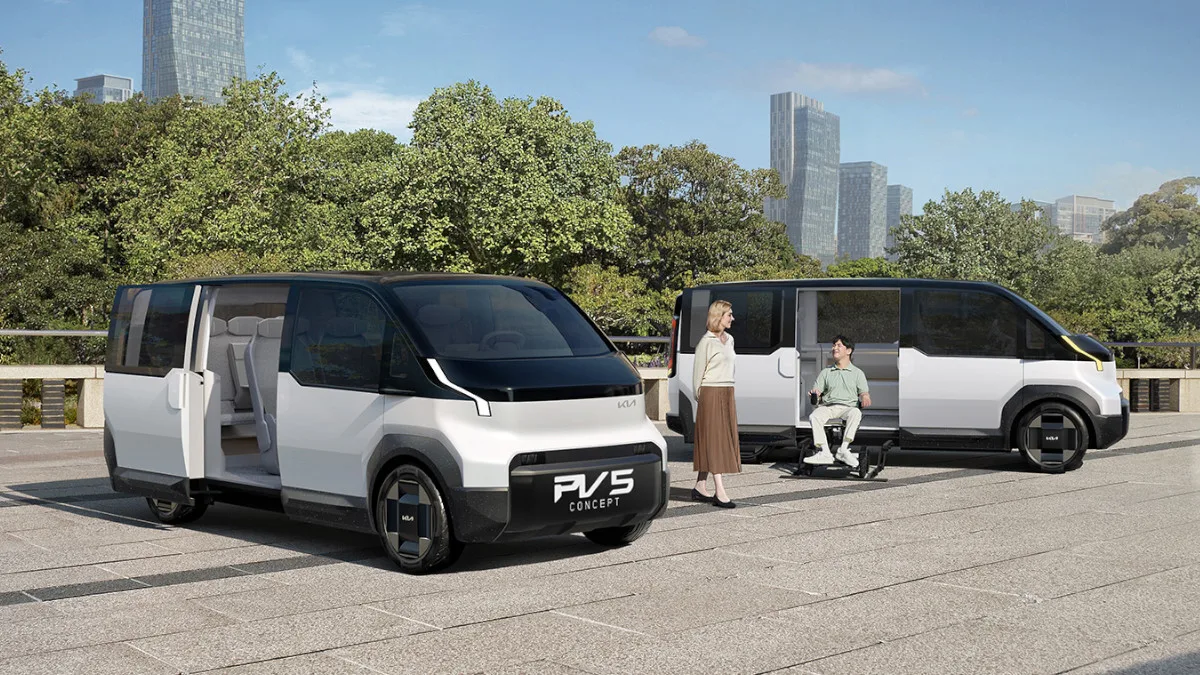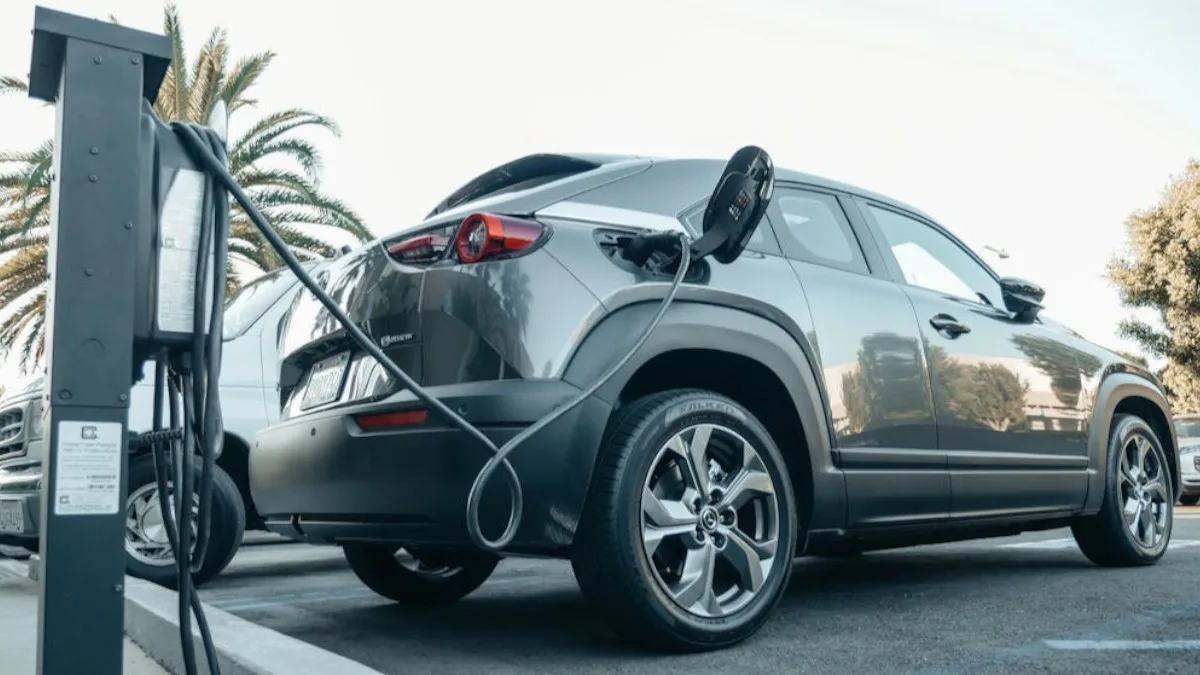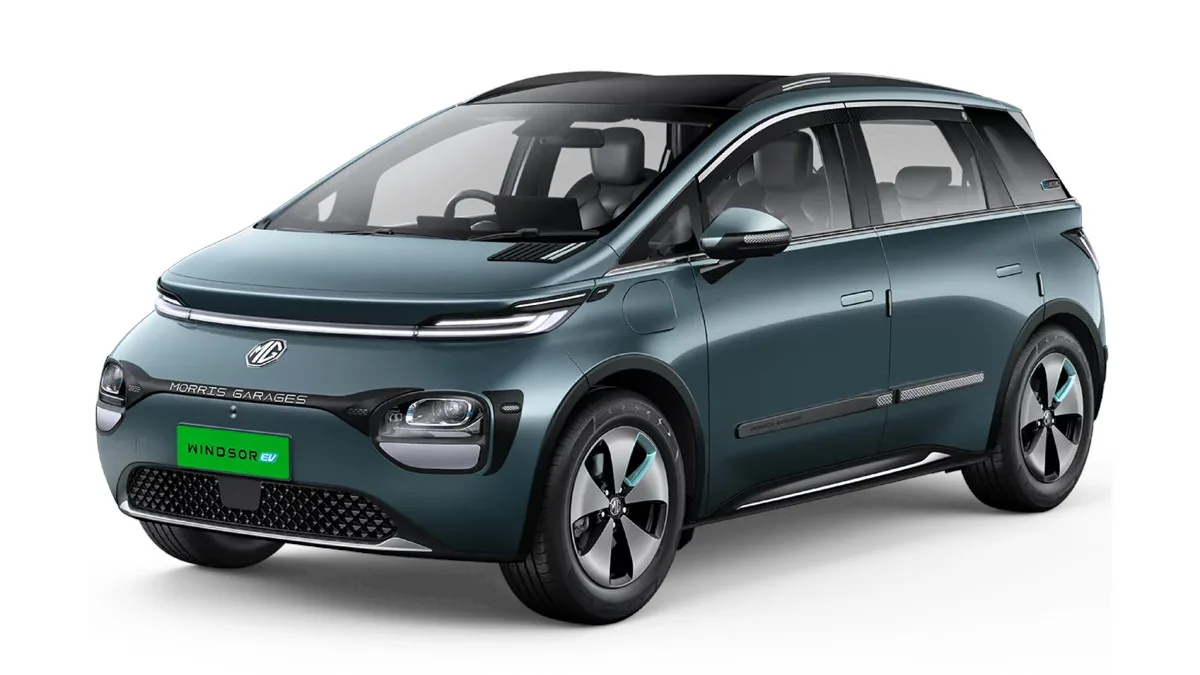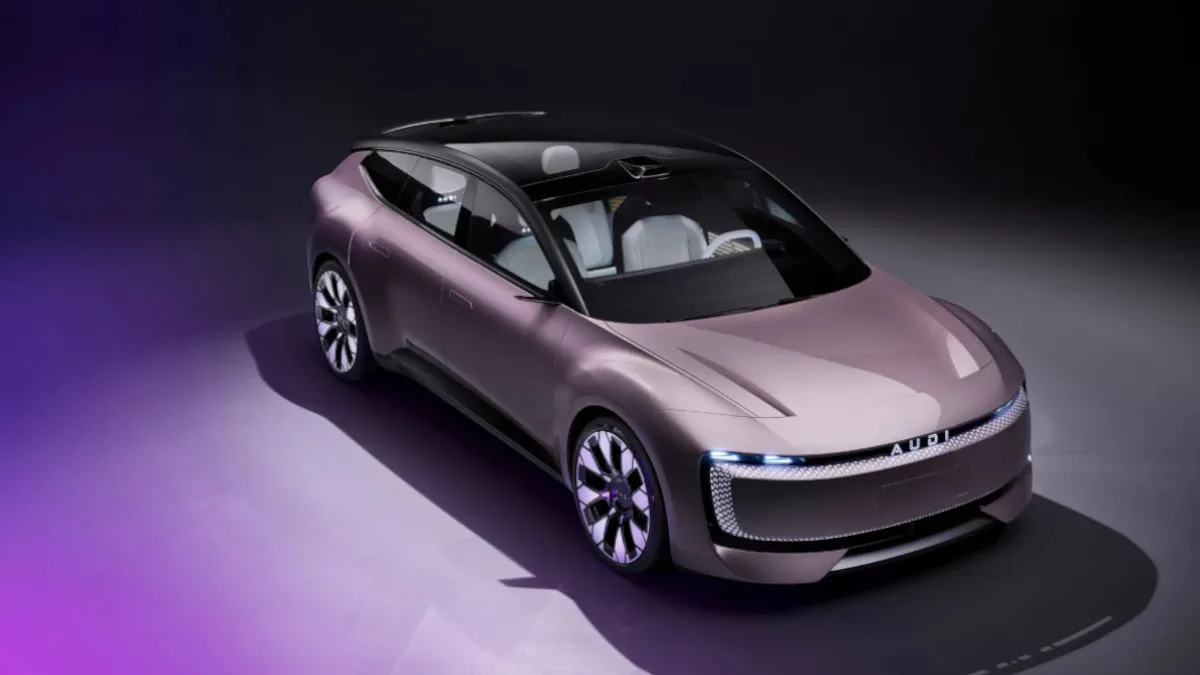Kia, renowned for its electrifying car and SUV lineup, is taking a bold step towards a diversified future. The South Korean automaker is venturing into the passenger and light commercial van sector with innovative Platform Beyond Vehicles (PBVs). This move signifies a commitment to a versatile and electric transportation landscape.
A Glimpse into the Electrified Van Revolution
At CES 2024, Kia offered a glimpse into their electric van strategy with three concepts: PV1, PV5, and PV7. The mid-size PV5 will spearhead the project, rolling off production lines in South Korea by 2025. Following its success, the smaller, city-friendly PV1 and the larger, workhorse-oriented PV7 will complete the lineup, all boasting a unified design aesthetic.
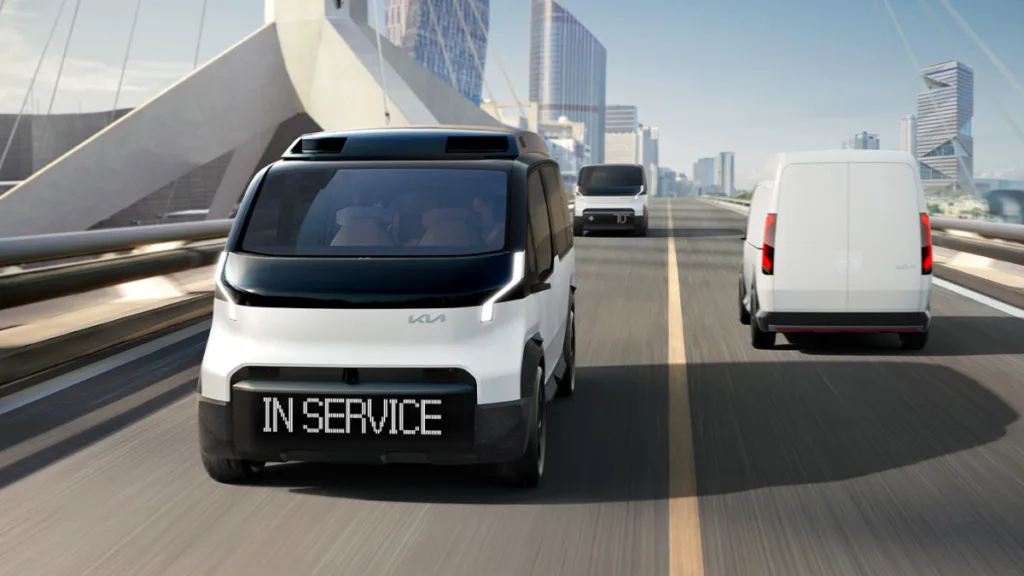
Kia’s Electric Vehicle Expansion
With ambitions to launch 14 EVs by 2027, Kia is poised to offer a comprehensive electric fleet, encompassing delivery vans, shuttles, and even robotaxis. This article delves into the details surrounding the highly anticipated PV5.
Futuristic Aesthetics Captivate
Drawing inspiration from development prototypes spotted in Europe, the production-ready PV5 is expected to retain the concept’s captivating design language. Imagine a captivating interplay of geometrical shapes, sharp creases, and clean surfaces. Striking highlights include cascading DRLs flowing into the two-toned front fascia, with primary headlights positioned within a rectangular grille graphic.
Angular fenders and an unusually tall glasshouse exude a futuristic aura, yet the overall design remains cohesive across all body styles. The rear echoes traditional van aesthetics with slender LED taillights and practical barn-style doors featuring an offset license plate.
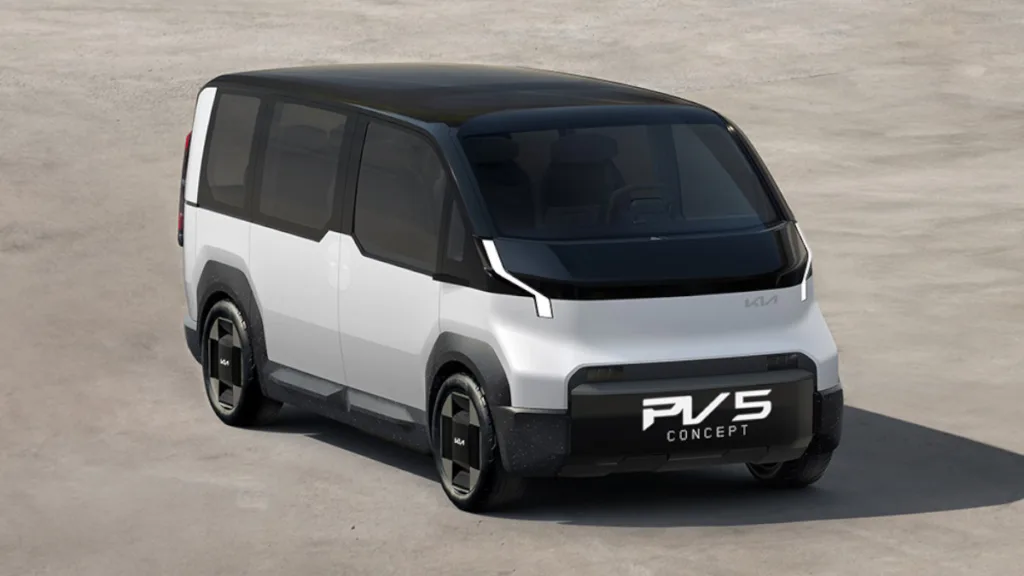
Practicality at its Core
Each PV5 variant prioritizes user-centric design and versatility. Passenger and basic van models will stand tall at 74.8 inches (1,900mm), while the high-roof variant boasts an impressive 86.61 inches (2,200mm) for maximized cargo space. The ingenious “e-CCPM” platform fosters even more adaptability, offering interchangeable camper, taxi, and cab-chassis configurations behind a fixed cockpit.
Passenger models promise flexible seating arrangements, coupled with advanced connectivity and AI-powered infotainment features. The delivery van, on the other hand, emphasizes cargo space with low floor heights and effortless loading functionalities. “By wire” technology for steering and braking empowers advanced driver-assist systems, particularly crucial for the robotaxi model equipped with autonomous driving capabilities.
Electric Power for a Sustainable Future
Though specific powertrain details remain under wraps, the PV5’s electric architecture will undoubtedly leverage cutting-edge battery technology for a competitive range and efficient performance. Sharing components with other Kia electric vehicles is a distinct possibility, including dual-motor options, ensuring a compelling blend of power, efficiency, and rapid DC charging capabilities.
Given its commercial focus, expect V2L (Vehicle-to-Load) and V2G (Vehicle-to-Grid) compatibility, further enhancing its utility. The chassis cab version caters to businesses seeking a dependable, customizable electric platform for specialized purposes, ranging from mobile workshops to bespoke cargo solutions.
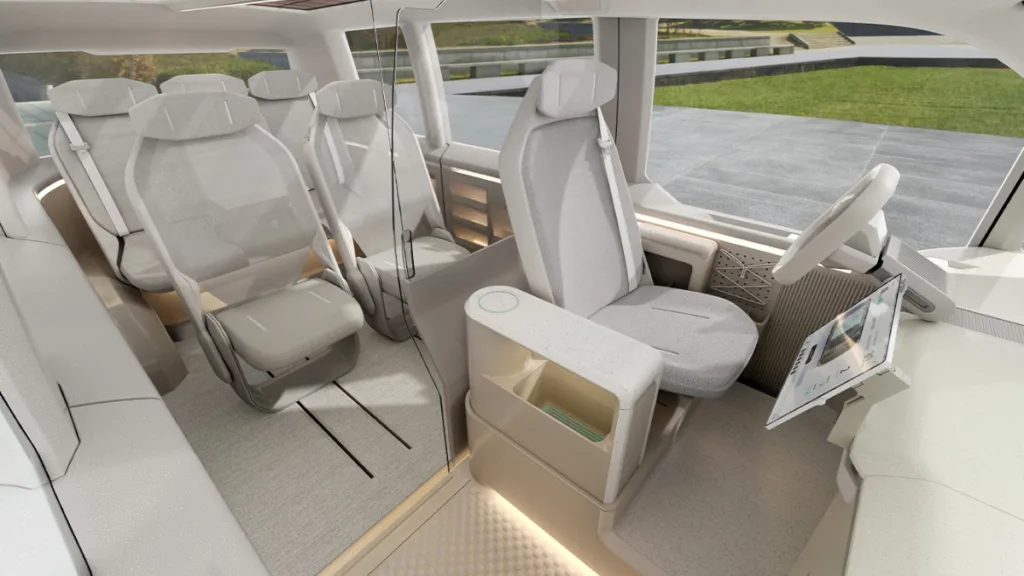
Competition Heats Up
The PV5 is poised to face strong competition from a growing list of contenders, including the Ford E-Transit, Mercedes-Benz eVito, and the upcoming Volkswagen ID.Buzz Cargo. These rivals all wield electric powertrains tailored for both commercial and passenger applications.
The mid-size van is scheduled for debut next year, with production kicking off at Kia’s new Hwaseong plant. However, PV5 models destined for North America might be assembled at the Mexican factory to circumvent the “chicken tax” on imported commercial vehicles.
The launch of the PV5 is merely the beginning. The smaller PV1 and larger PV7 will follow suit, forming a comprehensive lineup, as Kia strives towards its ambitious goal of producing up to 150,000 units annually. While pricing details haven’t been announced, expect a premium price tag for these cutting-edge electric PBVs.
Kia’s foray into the electric van space signifies an exciting shift towards diversified and sustainable transportation solutions. The PV5, with its futuristic design, practical functionalities, and electric powertrain, stands out as a compelling option for businesses and individuals alike. As the electric van segment intensifies, Kia’s commitment to innovation positions it as a frontrunner in shaping the future of urban mobility.
Discover more from Wheels Craze - Automotive News, EV News, Car News, Bike News
Subscribe to get the latest posts to your email.


